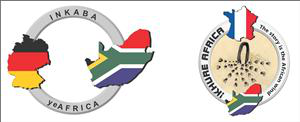Speaker
Ms
Naledi Chere
(AEON - NMMU)
Description
In the Main Karoo Basin, Permo-Carboniferous black shales of the Lower Ecca Group, especially the Prince Albert and Whitehill Formations, are considered to be a potential source of shale gas. Core samples of shale were collected from eight boreholes predominantly drilled in the 1960’s, and stored at the Council for Geosciences’ core library in Pretoria. The carbonaceous black shale of the Whitehill Formation attains a maximum thickness of 60m in the western portion basin, whereas an average thickness of approximately 33m is recorded in the south western region of the basin. Due to the occurrence of such thick successions of black shales, the Karoo Basin is one of the targeted regions for shale gas exploration.
The samples were analysed for their gas potential, using standard shale gas exploration parameters, which entails detailed source rock characterization. This has been accomplished mainly through organic petrology and organic geochemistry. Organic petrography included techniques such as optical microscopy and electron microscopy (i.e. SEM, FIB-SEM). These are important in identifying compositional and textural variability within the rock. Complementary geochemical analysis such as Rock Eval and GC MS were crucial in determining factors like fraction of gas present as adsorbed gas, organic matter type and TOC content.
The mineralogical composition, as observed through thin section microscopy, is dominated by quartz, feldspars, clays and carbonates. Moreover, the shale samples were shown to predominantly consist of alternating layers of silt-enriched and mud-enriched horizons through thin section studies. Investigations with the XRF technique showed SiO2 to be the dominant major element component. In addition, XRD analyses reveal quartz to be the dominant mineral phase in most of the samples. SEM further confirms the dominance of quartz and clay minerals (illite). The enrichment in quartz indicates high brittleness of the shale which is crucial for controlled hydraulic fracking and successful extraction of potentially tight gas. SEM was used to further identify minerals that appear opaque under the optical microscope (e.g. pyrite) as well as to identify organic matter. FIB-SEM was utilized to study rock specimen at a nanometer scale, enabling the identification of organic matter, porosity within the organic matter as well as intragranular porosity.
Total organic carbon (TOC) content must be greater than 0.5 wt % for the rock to be a potential source rock. The Karoo shale samples reach a maximum of 7.3 wt% TOC in the south western region of the basin. The samples from borehole KI1/65 record the highest TOC values and adsorbed methane content, as detected by thermovap-GC, with up to 10.2 µg/g CH4. Open pyrolysis analysis show the organic matter from samples of well LA 1/68 to be of Type III type kerogen, the QU 1/65 to be Type I/II and the samples of KI 1/65 to consists organic matter of both Type I/II and Type III. The combination of the results from these geochemical techniques and the understanding of the evolution of the Karoo basin (i.e. thickness variation, thermal history, variation in depositional environments) have been used to characterize the shales from the Main Karoo Basin for their gas potential.
Primary author
Ms
Naledi Chere
(AEON - NMMU)
Co-authors
Dr
Hans-Martin Schulz
(Helmholtz Centre for Geosciences, GFZ-Potsdam, Germany)
Prof.
Maarten De Wit
(AEON - NMMU)

